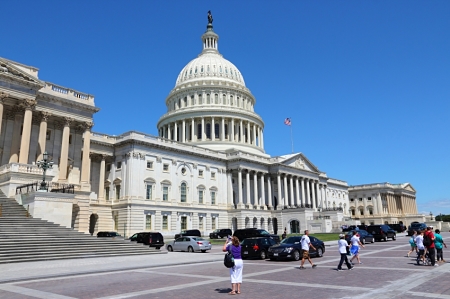HOS restart rule suspended until September of 2015
A controversial Hours of Service (HOS) restart rule that required truck drivers to take two periods off between 1 a.m. and 5 a.m. during their 34-hour restart, and limited use of the restart to once a week was suspended last week when President Obama signed a trillion-dollar omnibus funding package that included the HOS rule suspension.
The legislation requires the Federal Motor Carrier Safety Administration (FMCSA) to conduct a “real world” study of those regulations.
The rule suspension will remain in effect until Sept. 30 2015 or until the agency has completed the mandated impact study.
The American Trucking Associations (ATA), a strong opponent of the restart rule, thanked Congress – particularly Sen. Susan Collins of Maine – for the legislation.
“We have known since the beginning that the federal government did not properly evaluate the potential impacts of the changes it made in July 2013,” said ATA President and CEO Bill Graves. “Now, thanks to the hard work of Senator Collins and many others, we have a common sense solution. Suspending these restrictions until all the proper research can be done is a reasonable step.”
The Collins Amendment language, which was adopted by a strong bipartisan vote of the Senate Appropriations Committee, suspends the restriction on the use of the so-called 34-hour restart that requires drivers to take two consecutive periods of 1am to 5am off during the restart, thus pushing them into riskier daytime driving and then lifts the restriction on using the restart more than once every 168 hours.
The rules suspension came in spite of opposition from the Administration, which lobbied against the Collins Amendment.
U.S. Transportation Secretary Anthony Foxx called on members of Congress to reject the amendment. In a letter to key members of the House and Senate appropriations committees, Foxx said the Department of Transportation and safety groups opposed the amendment.
“Basically, [the restart rule] requires that drivers have the opportunity to take a very real rest and catch up on sleep before working another very long week,” said Foxx. “The net effect of these changes was to reduce the average maximum week a driver could work from 82 hours to 70 hours.”
Foxx said he was “voicing my strong objection to this rider” as it will have the effect of once again allowing a segment of the trucking industry to operate an average of as many as 82 hours per week.
Joan Claybrook, president of Public Citizen and a former chief administration for FMCSA, took a much harsher tone in her statement concerning the restart rider.
“There has not been a single congressional oversight hearing in either the House or Senate on making this dangerous and deadly change to current law,” she said. “There has not been any comprehensive safety review and analysis by experts.”
ATA Chairman Duane Long said the previous rule was working. “Fleets from around the country, including mine, tried to tell FMCSA that the previous rules were working just fine and that these new restart provisions were going to cause unintended problems.”
FMCSA said it is working to ensure that the 12,000 state and federal motor carrier enforcement personnel are prepared for the change. The enforcement community has expressed concern about this process.
The future of the restart rule appears to depend on what the study finds.
The law is specific about the timeline and about what the study should cover but it does not say what the Department of Transportation must do in response to the study.
Here’s the timeline:
- The July 2013 restart was suspended as of Tuesday, December 16.
- As soon as possible, FMCSA must publish a notice saying that the newer restart is suspended and the older one is in effect.
- The Department of Transportation has 60 days from Dec. 16 to submit its plan for the study to the DOT Inspector General.
- The Inspector General has 30 days from then to review the plan and report its findings and recommendations back to the Secretary of Transportation and the appropriations committees in the House and Senate.
- FMCSA must begin the study within 90 days of Dec. 16 – no later than mid-March.
- The agency then has 210 days (seven months) to finish the study, which could push completion to late October.
- When the study is done, the DOT Secretary must submit a final report, including recommendations, to the Inspector General. The recommendations must address the question of whether the more restrictive restart rule “provides a greater net benefit for the operational, safety, health and fatigue impacts of the restart provisions.”
- The Inspector General then has 60 days to report back to the DOT Secretary and to the House and Senate appropriations committees on whether or not the study met all the requirements set forth in the law.
- After the Inspector General submits his report, DOT must send the final report to the appropriations committees and make it public.






